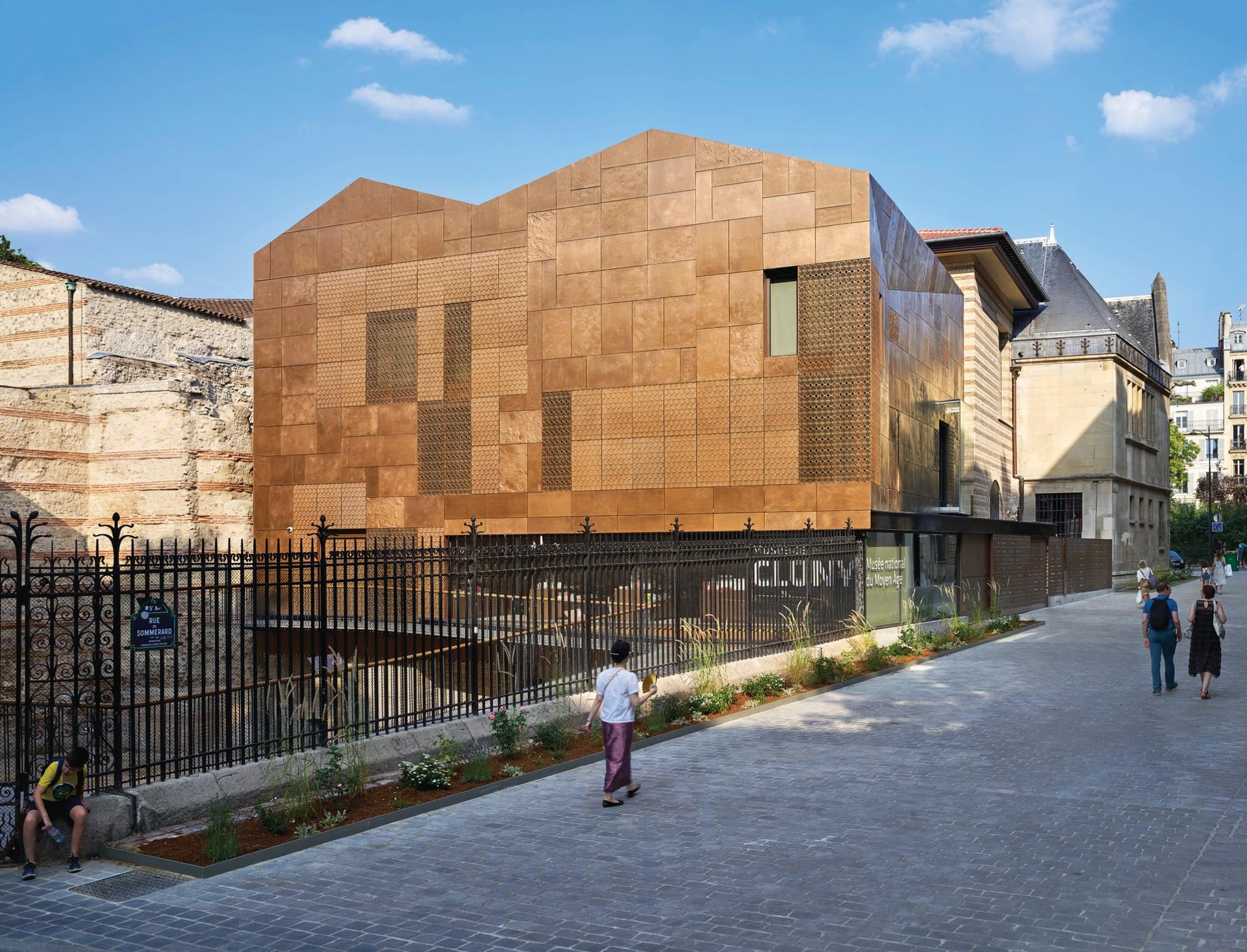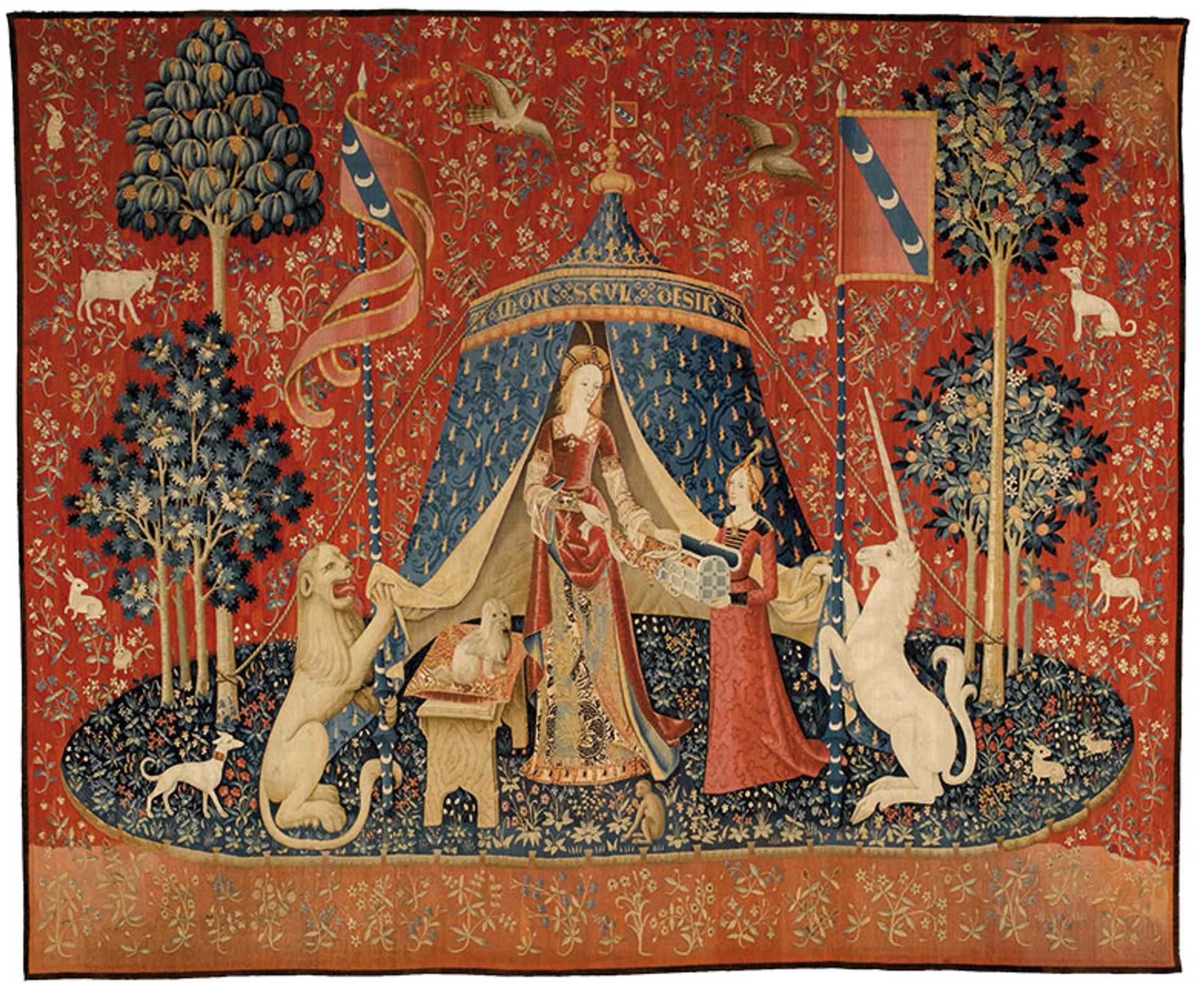The reopening of France’s National Museum of the Middle Ages this spring looks something like a renaissance. “The Musée de Cluny was one of the few French national museums not to have undergone major renovations since the Second World War,” says Séverine Lepape, its director.
Although she recalls that “a number of projects were imagined” in the 1990s to redevelop the site in the heart of Paris’s Latin Quarter, they came up against the challenge of archaeological remains: ancient Gallo-Roman thermal baths in the grounds that date from the first or second century. A turning point came in 2011, Lepape says, with the French law mandating the accessibility of museums for people with reduced mobility, which “has allowed the Musée de Cluny to benefit from an ambitious programme”.

Exterior view of the Musée de Cluny. © Michel Bourguet/Musée de Cluny
The gradual seven-year transformation of the museum has cost around €26m. Making it accessible meant creating a new entrance. Previously, visitors entered through a heavy wooden door from the courtyard of the Hôtel des Abbés de Cluny, located opposite Sorbonne University. However impressive the building’s 15th-century Gothic façades were, it was impossible for disabled visitors to move through its numerous split levels.
Finding new routes
In 2014 a design competition was launched to build a new reception area level with the street, Rue Du Sommerard—named after the archaeologist and collector who founded the museum in the 19th century. The winning architect, Bernard Desmoulin, designed a gabled extension that opens on to the busy Latin Quarter, clad in bronze-coloured aluminium panels and a metal mesh. Desmoulin was joined in 2016 by the interior designer Adrien Gardère and Paul Barnoud, a state conservation architect for historic monuments, to redesign the visitor route, which was turned upside down by the building’s new configuration.
Classed as France’s National Museum of the Middle Ages since 1992, the former Cluny “presented its collections in a fairly educational way, according to different techniques: one room was devoted to carpenters, another to upholsterers”, Lepape says. Now its revamped permanent exhibition will display 1,600 pieces as “a chronological journey through 21 rooms, from the first vestiges of the first century to the 15th century”. Around 500 works have been newly restored for the occasion.

Some of the museum’s most prized works are the Lady and the Unicorn series of tapestries (around 1500), including this one with the embroidered inscription “À mon seul désir” (to my only desire) Franck Raux; © RMN-Grand Palais
The visit begins with the monumental frigidarium (cold room) of the ancient baths. The beginnings of the Middle Ages—Merovingian and Byzantine pieces and the 11th-century gold altar frontal from Basel cathedral, one of the masterpieces of the collection—are followed by Romanesque and Gothic art in a majestic room. Twelve carved capitals from the nave of the abbey of Saint Germain des Prés are presented on contemporary columns, alongside sculptural fragments of heads and stained-glass windows from the abbey of Saint-Denis.
Next comes the room of sculptures from Notre-Dame de Paris, which were replaced during restorations of the cathedral by Viollet-le-Duc in the 19th century, as well as the statue fragments torn from the facade during the French Revolution and only rediscovered in 1977. The ground floor of the medieval town house presents the Work of Limoges, an important collection of champlevé enamels, a technique that flourished in the 12th century.
Stained glass, stone and ivory
The section devoted to art in the 13th century reveals a set of pieces from the Sainte Chapelle that have been brought together for the first time—including restored sculptures of the apostles, stained-glass windows and a rare reliquary—and further on, all the virtuosity of stonemasonry in the sculpted vegetal motifs of the keystones from the Collège de Cluny. Next to funerary sculpture from the time of Philippe le Bel and his sons lies a small treasure: an ivory casket with delicate carvings depicting scenes of courtly love.
The first floor is dedicated to the 14th and 15th centuries in France, Italy and northern Europe. At the end of the visitor route is the museum’s indisputable highlight: the six Lady and the Unicorn tapestries, woven around 1500. The cycle represents the theme of the five senses, to which is added the enigmatic sixth, inscribed “To my only desire”.
Now fully accessible (two lifts and access ramps have been installed), the refreshed museum has gained in legibility, with an entrance visible from the street, a café, architectural openings for daylight and displays that better show off the collections. “The contemporary extension and the new scenography bring it into the 21st century, while respectfully being part of a long history,” Lepape says.
The reopening exhibition will focus on the architecture of the museum. In October a show in collaboration with the Musée des Augustins in Toulouse will honour art of the 14th century from the “pink city”—a counterpart to last autumn’s exceptional loan of the Lady and the Unicorn tapestries to Les Abattoirs art centre in Toulouse. Returning after 18 months of closure, the Musée de Cluny ultimately hopes to reconnect with its pre-pandemic audience—around 300,000 visitors a year, with around half coming from outside France.


